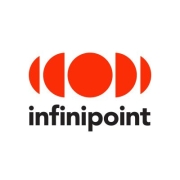IT Asset Management optimizes the deployment and maintenance of IT assets, ensuring efficient utilization and cost savings. It incorporates processes for tracking both hardware and software, enhancing overall IT governance and risk management.
This category facilitates effective inventory management by providing comprehensive visibility over asset lifecycles. Organizations can streamline operations through automation, minimizing manual tasks and improving accuracy in auditing and reporting. With the implementation of IT Asset Management, companies can enhance decision-making processes through predictive analysis and trend identification, reducing operational costs and maximizing asset value.
What are the critical features of IT Asset Management?Different industries implement IT Asset Management for unique purposes. In finance, it ensures regulatory compliance and security. In healthcare, it supports the management of medical devices and patient data. Manufacturing uses it to monitor equipment performance and maintenance schedules, improving production efficiency.
This solution helps organizations maintain a structured approach to managing IT resources. By centralizing and simplifying asset tracking and usage monitoring, organizations can achieve more control over their IT environment, aligning technology investments with business goals.




























































IT Asset Management enhances efficiency by systematically tracking hardware and software assets, aiding in cost control through optimized asset utilization and procurement strategies. It ensures compliance with licensing agreements, reducing risks associated with audits and potential legal issues. Centralized inventory management simplifies asset tracking and lifecycle management, leading to informed decision-making. Improved asset visibility supports strategic planning and budget forecasting. It also enhances security by identifying unauthorized or end-of-life equipment, thus preventing data breaches. Automation in IT Asset Management reduces human error, improving productivity. It facilitates seamless integration with existing IT infrastructure, ensuring continuity and reliability.
IT Asset Management helps you track and manage your organization's technology investments, enabling you to pinpoint exactly where resources are being used efficiently or wasted. By having an accurate inventory, you can avoid unnecessary purchases, reduce software licensing costs, and optimize asset utilization. Monitoring the life cycle of each asset ensures timely maintenance and replacement planning, further preventing costly downtime or unexpected expenses.
What is the role of IT Asset Management in cybersecurity?IT Asset Management plays a crucial role in cybersecurity by maintaining an up-to-date inventory of all hardware and software within your network. This visibility allows you to quickly identify and address vulnerabilities, apply security patches, and ensure compliance with regulatory standards. By knowing what assets you own, you can enforce security policies more effectively and protect sensitive data against potential breaches.
Why is software license management important in IT Asset Management?Software license management ensures that your organization remains compliant with licensing agreements and avoids legal issues. By managing your software assets, you can track usage, optimize licenses to match employee needs, and eliminate unnecessary spending on unused software. Proper license management reduces the risk of non-compliance penalties and helps you budget for future software acquisitions more accurately.
How does IT Asset Management support digital transformation?IT Asset Management supports digital transformation by providing a clear overview of your current IT infrastructure, allowing you to identify gaps and opportunities for modernization. With well-documented assets, you can make informed decisions when integrating new technologies and align them with business objectives. IT Asset Management facilitates a smoother transition by ensuring hardware and software compatibility and promoting effective resource allocation.
What are the challenges of implementing an IT Asset Management system?Implementing an IT Asset Management system can be challenging due to the need for accurate data collection, integration with existing processes, and employee adoption. You must ensure that all assets are correctly inventoried and classified while aligning the system with organizational goals. Training and change management strategies are essential to encourage user adoption. Addressing these challenges head-on will result in a more efficient and sustainable IT environment.